Last week in my “Natural with Nutella” post, I was so giddy. I made three different homemade dairy-free versions of Nutella! I was convinced, even before embarking on the project, that no matter what, my version would be healthier than the purchased jar. Why? Well, because I was making it in my home. Isn’t that automatically healthier?
Don’t laugh. For someone like me, who’s still very much fumbling around the kitchen like Frankenstein, knowing some of the ingredients in a recipe has been enough to claim something “nutritious.”
Later that morning, I was sitting in the Blogher Writer’s Conference, zoned out and still basking in my Nutella mania – bananas with Nutella,..challah and Nutella…crepes with Nutella…waffles with Nutella. It soon came to a screeching halt when Eve, a loyal MyJudytheFoodie reader, and an even more brilliant author whom I admire very much, politely suggested (with quantitative evidence supporting her opinion) that perhaps my version wasn’t any better than the store bought after all.
I broke out in a sweat and felt like I was gut punched.
Sure, the recipe I used at home only contains three ingredients.
Sure, I measured, stirred, baked, and scooped all of the ingredients with my own hands.
But, is that reason enough to believe that my Nutella is healthier?
I never bothered to check the sugar content for the syrup and for the raw honey.
I felt foolish for being so naive and immediately had a slew of bottle-necked questions that needed answers from an expert.
I was desperate.
I reached out to my lifeline, Lauren Slayton, MS RD. Lauren is a nationally-renowned nutritionist and owner of Foodtrainers Inc. here in New York City. In addition to juggling her private practice, Lauren lectures around the country, has had myriad television appearances and magazine articles written (too many to list) AND, she’s also a mother-of-two. Lauren was more than willing to shed some light.
Here are some of Lauren’s answers to my frenzied questions on the topic of homemade versus store bought:
From experience, have you found that people fall into the trap of automatically thinking food that’s cooked at home is healthier than food purchased in the store?
In some ways homemade is better in that preservatives and food dyes used in packaged foods are generally absent in home cooked food. However, just because something is made in a home kitchen doesn’t make it healthy. Paula Dean and Ina Garten I’m talking to you .
Any quick tips for people to use when they’re cooking at home? Any constant ingredient traps (olive oil, white sugar, etc) that can significantly alter the nutritional value of your meals when you’re not paying attention?
I think in cooking and in life we tend to think if something is healthy it’s unlimited. We’ve seen this with olive oil and agave nectar. A fat is a fat and has double the calories of carbs or protein and sweet is sweet. It can be lower glycemic or organic and it’ll still rot your teeth and make you gain weight if it’s not monitored. Having said this, I would take extra olive oil or agave nectar over trans fats and HFCS (that’s high fructose corn syrup) any day.
With my Nutella experiment, is my homemade dairy-free version actually worse off for me than the processed version from the stores because of the sugar content? (Doesn’t the raw honey have a higher glycemic impact per tablespoon than the sugar that Nutella uses or corn syrup).
I loved your Nutella post (she said that I swear). We did a lot of research recently on personal care products and just because something is from Europe or pricey doesn’t mean it’s good for us. This is certainly true of the original Nutella. My first step was to go to the Nutella website where I read the spread was made from “hazelnuts, skim milk and cocoa”. That sounds good but a big red flag was that a true list of ingredients was impossible to find. I found out sugar is the first ingredient and palm oil second, so much for hazelnuts. Two tablespoons of this has 21 grams of sugar and not much else in the nutrition department.
In contrast I calculated the nutritionals for your new Nutella (almond butter, cocoa and maple syrup) and the sugar content was reduced to 4.0 grams of sugar per serving. The calories went from 200 to 151 per 2 Tbs. In terms of GI or glycemic index- both versions sport a low GI thanks to the fat content of the nuts or oil (as do potato chips so this isn’t a good litmus test on its own). The reason I would choose the homemade version is that you can choose better ingredients and you can control proportion. Your nutrition label would have almond butter as the most prominent ingredient and only 3 ingredients.
Do you make your own sauces and spreads for your food? If so, what do you usually make?
I’m more salty than sweet and love making a big pot of tomato sauce. I love dips made with tahini (sesame paste) and nut butters (artisana is my brand of choice). I look forward to experimenting with pumpkin and butternut squash spreads this season.
Any favorite brands of sweeteners you use when home cooking?
Wholesome Sweeteners
Family Heritage Maple Syrup
Madhava Agave Nectar
NuStevia
Well, I am very relieved that Lauren endorsed my homemade Nutella. Now I can save face with my last post.
But, I never bothered to tell Lauren that I sampled each and every Nutella mixture at least a couple of times with a causal, cat-that-ate-the-canary swipe of my index finger. A serious pitfall to cooking at home- sampling along the way.
So, while my version was deemed healthier, I’m sure that was nine finger swipes earlier.
Readers: When you cook at home, do you pay attention to labels and sugar content, etc? Or, are you just so happy you’re actually cooking, you think your dish has got to be healthier than store bought?
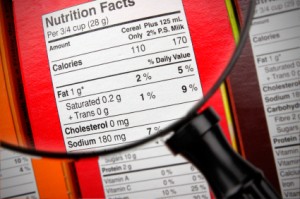
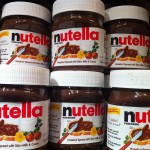

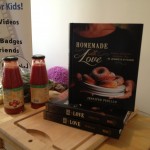
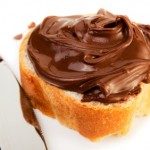
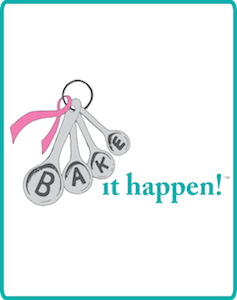


Shari – you and your very qualified friend make some great suggestions. Overall, I feel my “home made” dishes are more healthy if only because I know what is in them and coming from having worked in the food industry for many years I am very aware of the preservatives that are used in processed foods and don’t like the idea of them being in my body or my kids bodies. All that said, I LOVE the nutella we buy at the supermarket, we buy it at costco – which tells you we use a lot of it. I can’t imagine making my own but kudos to you for doing it.
Love this too but I didn’t endorse the finger sweeps. I’m going to give my 2 or 10 cents on homemade on wednesday. You definitely touched on a great topic. I just hope the upshot isn’t that people say “see, it’s not good even if you cook” because that’s a cop out.
PS I think if you were asking for my opinion on homemade vrs packaged I should’ve been given some of the goods to sample…or did you “swipe” it all?
Great Q and A with Lauren! I do think that at the very least homemade is healthier than a lot of store bought products simply because of the lack of artificial stuff in homemade. Of course, you can make a lot of “not so healthy” homemade when you add a lot of sugar, etc. For most meals I make at home, I’m always pretty health conscious and try and cut back on sugar, salt, sat fat, etc, but sometimes I just really like to make a decadent dessert and enjoy! Love how your nutella recipe is quite a bit lower in sugar than the original version-will try it out!
Another great post, Shari. Especially the part about the “brilliant author.” 🙂 We’re big Nutella fans in our house, and I’m excited to try your homemade version, especially now that I know it’s got a lower glycemic impact than the packaged stuff.
I too am ecstatic Lauren endorsed your homemade nutella! I definitely pay attention when cooking and am healthier in terms of quality of ingredients… but I have a major sweet tooth and quantity is where I have trouble. Cookies made with whole grains doesn’t prevent you from eating too many, unfortunately. I see same issues with clients at Foodtrainers and with my family – my dad is a big cook and uses excellent ingredients, but quantity (and maybe excess red wine) still lead to high blood pressure and triglycerides. Interesting post!
I came over from Foodtrainers and I love this post. When I make homemade cookies, I substitute some of the white whole wheat flour with regular whole wheat flour and I always reduce the oil and sugar by “a bit.” I’m very scientific about the whole thing, as you can see. I suppose I reduce the sugar by 1-2 Tbls and the oil by as much as 4 Tbls. I like to make my own bread/biscuits using my Irish soda bread recipe and adding that whole wheat flour to it means I have to add water to the buttermilk. Otherwise, it is so dry it won’t come together because the whole wheat soaks up so much of the liquid. Previously, I had my recipe down to foolproof perfection with plain white flour.
Good on you for doing all this: I cringe every single time I see that Nutella commercial where the mom says it’s part of a “healthy” breakfast. 🙂
Caron » it’s definitely a journey for me. I’ve gone from never-having-cooked EVER to actually paying attention to ingredients and the food I’m putting on the table. because of that, I’m usually so surprised at the amount of sugar that gets dumped into everything. I made homemade apple butter from some apples we picked and it required mounds and mounds of sugar. The more confident I get in the kitchen, the more shortcuts I’ll take — like you do. SO glad you enjoyed the post and hope to see you back!